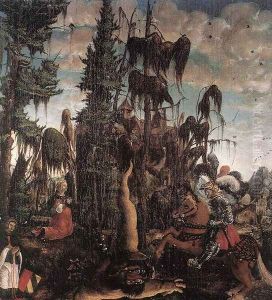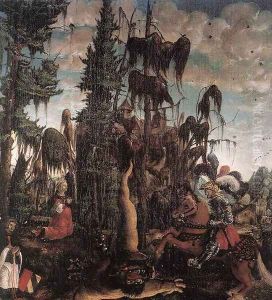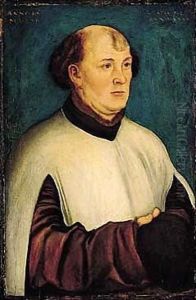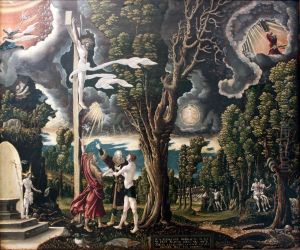Georg Lemberger Paintings
Georg Lemberger was a German painter and woodcut artist who lived during the Renaissance period. Born in the 1490s in Landshut, Bavaria, Lemberger's exact birth date is not recorded, which is not uncommon for this period. He is sometimes also referred to as Jörg Lemberger. Lemberger's life is not well-documented, and much of what we know about him comes from his surviving works and brief mentions in the archives of the time.
Lemberger's artistic style was influenced by the German Renaissance, particularly the work of Albrecht Dürer, who was a major figure in Northern European art. Lemberger is known to have been active in Leipzig by 1515, as documented by his works. He worked on several important commissions, including altarpieces and other religious works, which was a common practice for artists of his day.
One of his significant contributions to the art world was a series of woodcuts for the 'Luther Bible,' published in 1523. These woodcuts were part of the early efforts to spread the teachings of Martin Luther and the Protestant Reformation. Lemberger's illustrations would have played a role in making these texts more accessible and engaging to a wider audience, as most people at the time were illiterate and relied on visual imagery for understanding biblical stories.
Despite his contributions to woodcut art and painting, Lemberger did not achieve the same level of fame as some of his contemporaries. This was possibly due to the more regional nature of his work and the lack of extensive documentation or patronage that could have propelled his name beyond his own time and locality.
Georg Lemberger is believed to have died in 1540, although the exact circumstances of his death remain unclear. His works, however, have allowed him a modest place in the history of German Renaissance art. His woodcuts and paintings are characterized by their detailed representation, expressive figures, and intricate use of line, reflecting the transition from the late Gothic to Renaissance style. Today, Lemberger's works can be found in various collections and museums, offering insight into the religious and cultural milieu of early 16th-century Germany.



